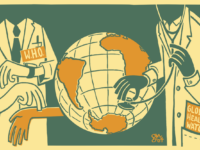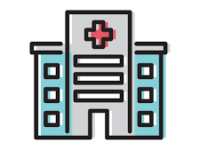I was prompted to learn American Sign Language (ASL) after a friend suggested I take an “random” general elective class at Northeastern: “Deaf People in Society.” Not knowing much about deafness and Deaf Culture, I figured I’d try it out, learn a few things. This was not only one of my favorite classes I’ve taken, but it changed the way I see the world. Our professor, Krishna Madaparthi, talked about how difficult it is to navigate the healthcare system as a deaf person, and how growing up, he was constantly taken to doctors that were trying to “fix” him. He was just a kid who did not want to go to the endless audiology and doctor’s appointments, but instead just wanted to play outside and sign with his friends. As someone who hopes to become a pediatrician, I was inspired. I quickly signed up for ASL classes with the hope that one day I will be conversational with my deaf patients and get to advocate for ASL.
Through online classes with Queer ASL — a group of deaf 2SLGBTQIA+ instructors across Canada and the U.S. dedicated to introducing ASL to hearing queer learners and their allies — I gained sign language skills I never expected to use so frequently. While on co–op at Boston Children’s Hospital Otolaryngology and Communication Enhancement Clinic, I quickly realized their value. Almost none of the providers or support staff knew how to sign, relying solely on two interpreters or inconsistent iPad–based interpretation.
When shadowing surgeries, I realized that interpreters are not allowed in operating rooms, even before the patient is put under anesthesia. This leaves patients scared and without support before procedures.
Despite common misconceptions about the prevalence and need for ASL, hearing loss affects a significant portion of the population. According to the National Institute on Deafness, 37.5 million American adults aged 18 and over report some trouble hearing. Additionally, 55% of those who are 75 and older have disabling hearing loss. Therefore, the benefits of introducing ASL early in education are undeniable.
Beyond medical settings, language barriers also shape the experiences of families. An immense, yet often overlooked, aspect of the experience of being a hearing parent to a deaf child is its intersectionality with also being an immigrant. Many ASL classes are conducted in the dominant language of the country, such as English, but there is a notable absence of resources tailored to immigrant communities. For instance, Spanish–speaking immigrant parents may struggle to find ASL classes taught in Spanish, hindering their ability to learn their child’s first language and effectively communicate with them.
This language barrier exacerbates the challenges already inherent in raising a deaf child, as effective communication is vital for fostering emotional bonds, facilitating language acquisition, and supporting cognitive development.
Addressing this gap in ASL education by providing resources and support in multiple languages is essential for empowering immigrant parents to fully engage in their child’s linguistic and cognitive development, advocate for their rights, and participate actively in their education. Integrating sign language instruction for all students, regardless of hearing ability, from kindergarten through 12th grade offers remarkable benefits — not only easing key challenges faced by the Deaf community but also serving as a profound gift to hearing individuals. If this initiative resonates with you, consider taking ASL classes or joining the Signing Huskies club on campus. The organization provides a welcoming space to practice and grow in ASL for learners of all levels.
After all, no child should go through anesthesia without words of reassurance. No immigrant parent should be barred from bonding with their deaf child.
No physician candidate should need to luckily take a “random” elective to find out about these disparities.






